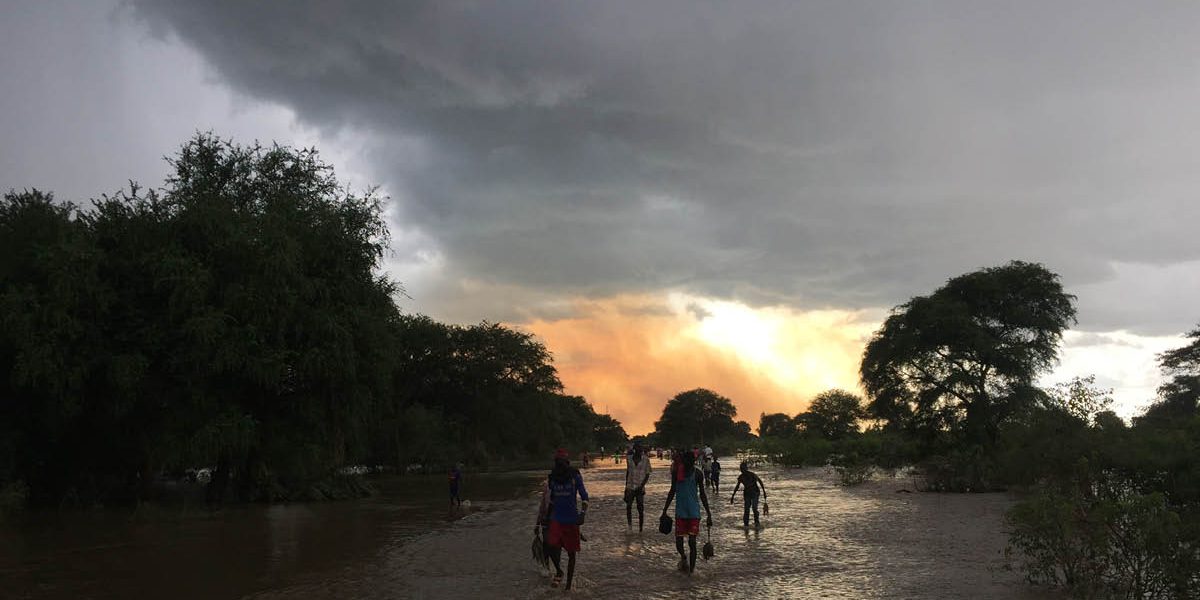Climate Refugees – Your Questions Answered
22 April 2019

Climate continues to have significant impacts around the world and powerful weather events, even in the midst of global pandemic, have captured the public’s attention. But how is climate change impacting displacement of people?
What is a climate refugee?
There is no internationally recognized definition of climate refugees, but climate refugees are generally understood to be migrants who have been forced to leave their homes due to the sudden or gradual impacts of climate change. The UN Refugee Agency estimates that by 2050, up to 250 million people will be displaced by climate change impacts such as rising sea levels, floods, famine, drought, hurricanes, desertification and the negative impacts on ecosystems.
In 2013 alone, almost three times as many people were displaced by disasters than conflict.
People who must migrate due to environmental degradation can be forced to flee temporarily and quickly due to a sudden natural disaster (e.g. hurricane, tsunami, etc.), leave because the environmental conditions in or near their home are deteriorating (e.g. deforestation, coastal deterioration), or leave to avoid future problems due to environmental deterioration (e.g. a farmer must move because crop production starts to fall).
People displaced by climate are often displaced within their own country and do not cross a border to reach a new country.
How does climate impact displacement otherwise?
Not only can climate change be a direct contributor to the displacement, but in many of today’s conflicts causing forced displacement climate change is a “threat multiplier.” A key example is Syria, where a 5-year drought preceded the civil war. Some experts assert that the devastation and scarcity of resources caused by the drought exacerbated socio-political tensions that led to the war. According to UN Secretary-General Antonio Guterres, “Climate change [is] now found to be the key factor accelerating all other drivers of forced displacement.”
Those who are displaced feel the impacts of climate change more than others. Flooding experienced in South Sudan in October made this clear. Jesuit Refugee Service saw first-hand the impact this weather had on the refugees we serve in Maban, South Sudan. Many of these refugees and internally displaced people had already survived violence and persecution only to have their new home destroyed by flooding.
What is the legal status of those displaced by climate change?
Climate refugees are not currently classified by international law as refugees, so they do not have the same recognition or protection as those who flee persecution, war, or violence.
Despite widespread recognition of the needs of climate-related forcibly displaced people—as great as any refugee– they continue to lack formal recognition.
Where are climate refugees?
No region is immune from the impacts of climate change, but some regions are being particularly hard hit. In parts of the Pacific, sea levels are rising as much as four times the global average. According to UNHCR, in 2015, 85 percent of people displaced by sudden onset disasters were in South and East Asia. That year, Tuvalu and Vanuatu saw 25 percent and 55 percent of their populations displaced during Cyclone Pam. When Cyclone Komen hit India and Myanmar later that year, 1.2 million and 1.6 million people were displaced respectively.
Low and lower-middle income countries have the most displacement linked to disasters, including in the context of climate change.
What does Catholic Social Teaching tell us about climate refugees?
Both climate change and the welcoming of migrants are issues that the Holy Father has pointed to as central in our time. In his encyclical Laudato Si’, Pope Francis draws the link between them, noting that climate is causing people, especially the poor, to leave their homes. He writes that “There has been a tragic rise in the number of migrants seeking to flee from the growing poverty caused by environmental degradation,” calling all of us to take responsibility for our brothers and sisters who have experienced this loss.
What is JRS doing to respond?
This year, JRS/USA signed on to the NGO Climate Compact, a pledge by a group of other Humanitarian organizations to commit to urgently work to address climate change, as well as the recognition that the environment is central to achieving our missions to serve the world’s poorest and most vulnerable people.



